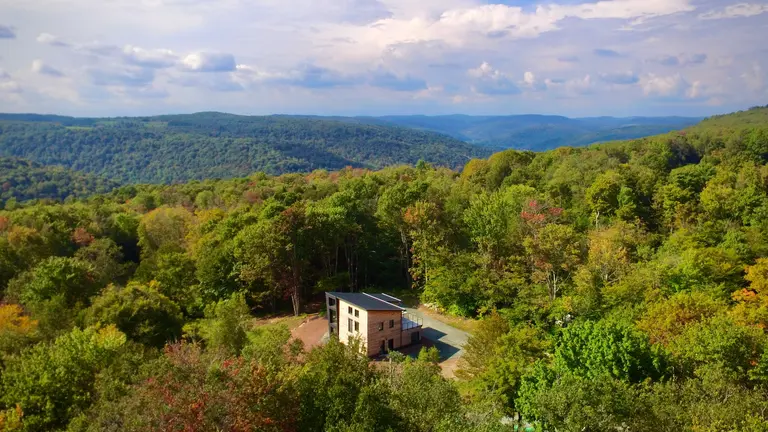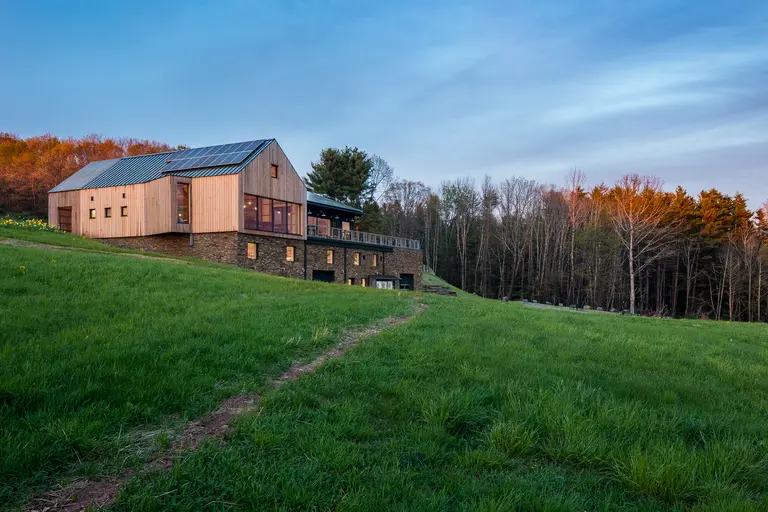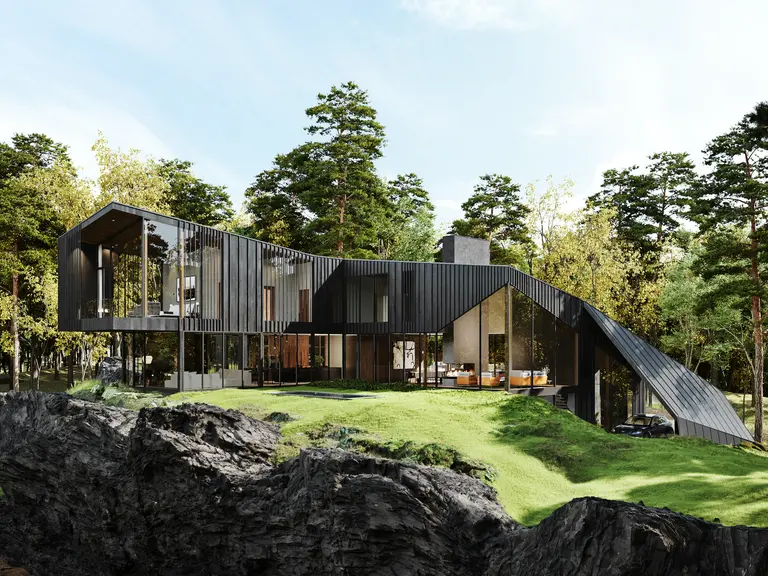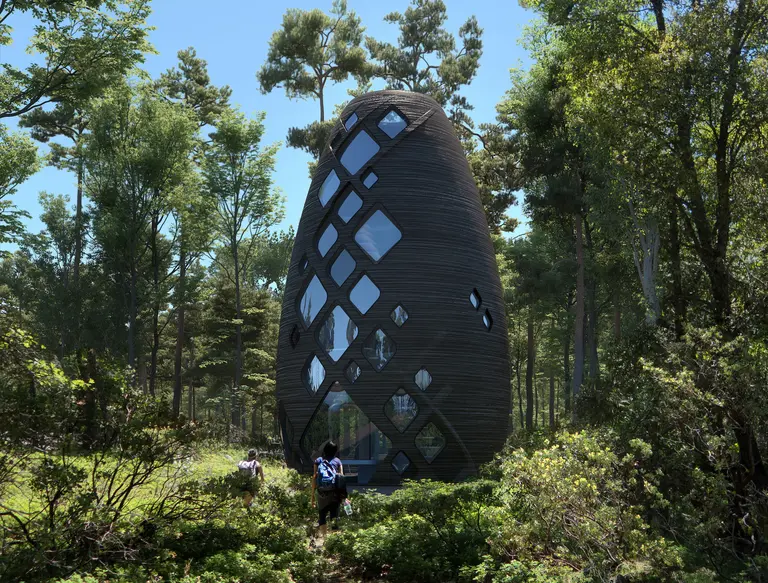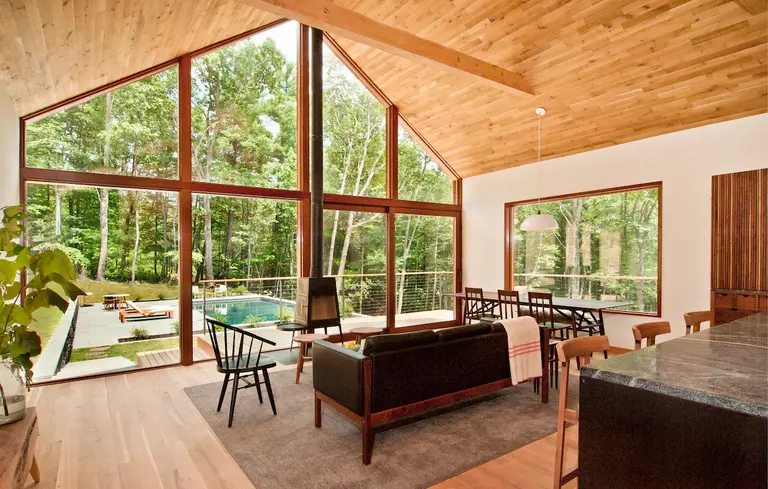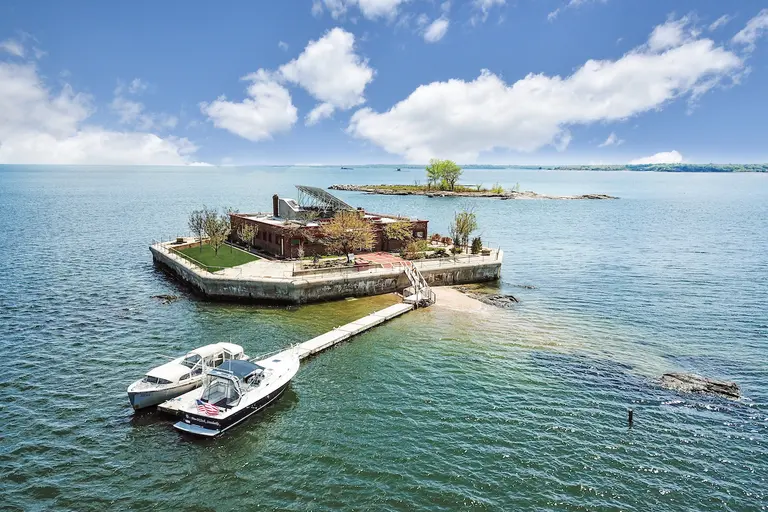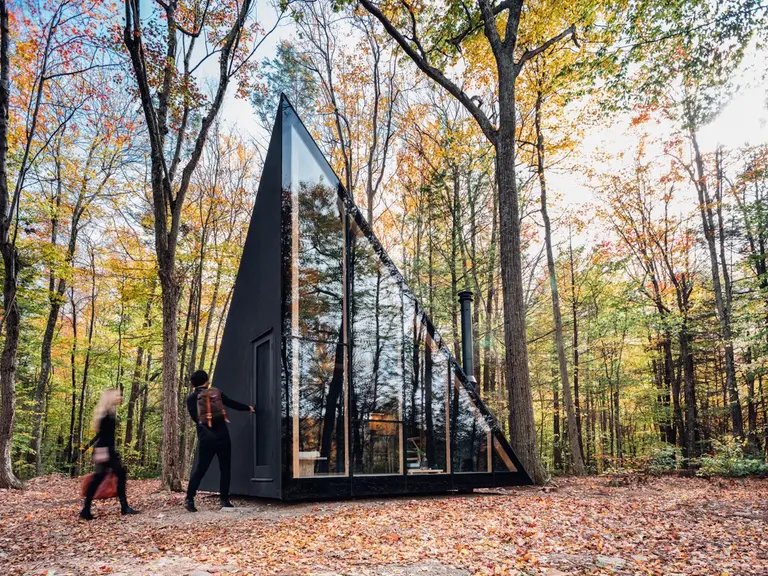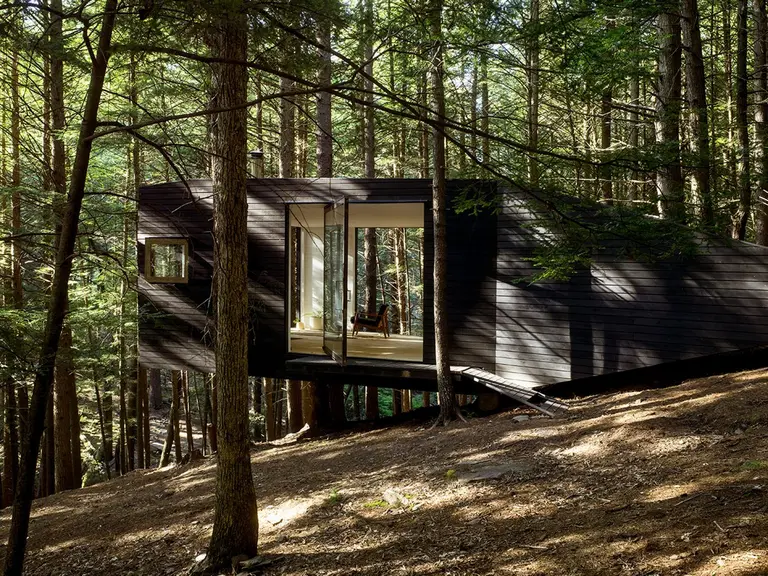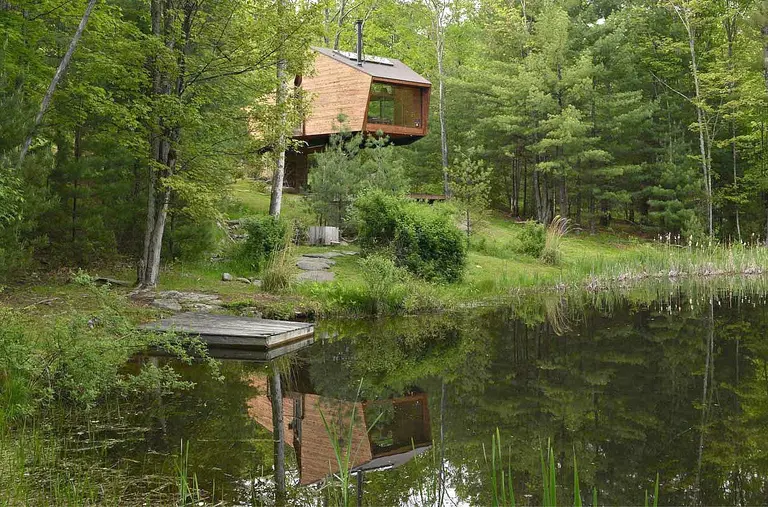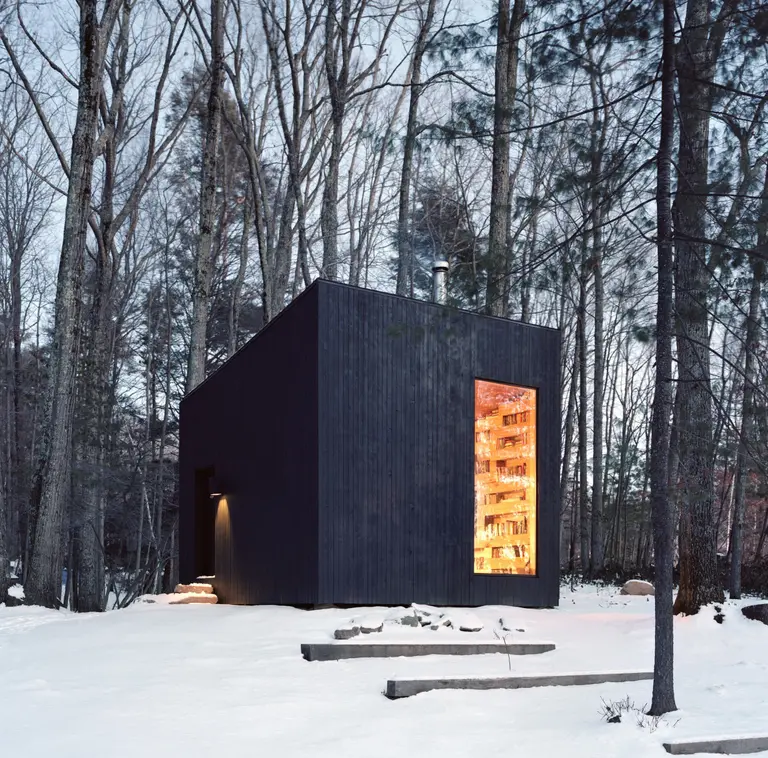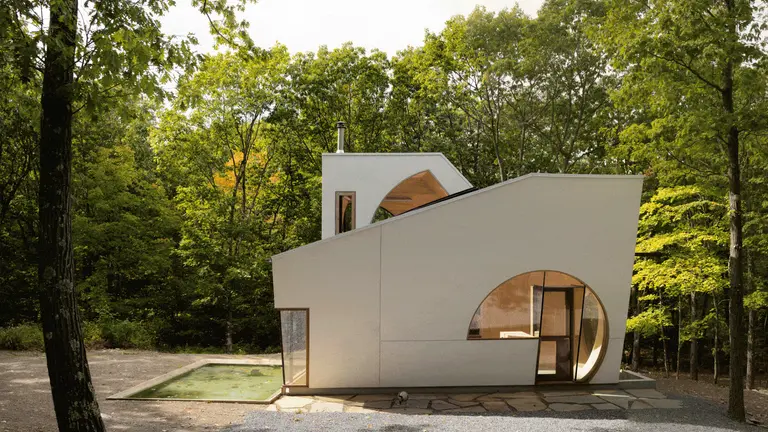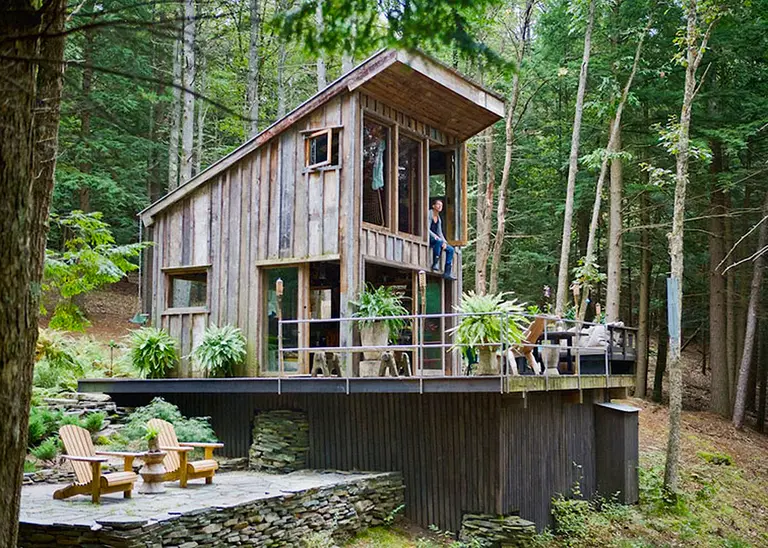This Catskills community was designed by a real-life cowboy
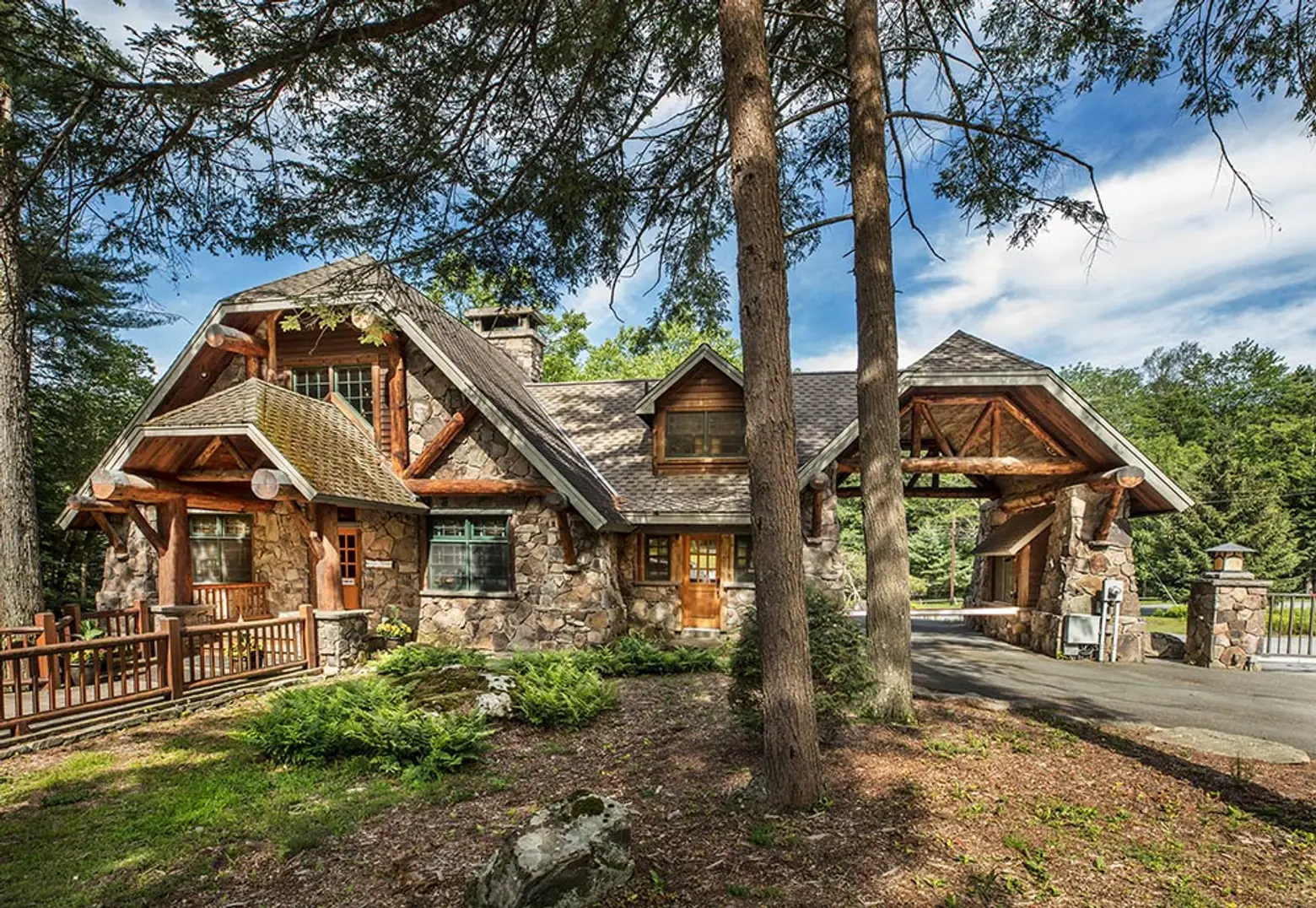
All photos courtesy of The Chapin Estate
The Chapin Estate is a 2,500-acre gated residential preserve in the Catskills, a 90-minute drive from midtown Manhattan. And if its rustic-yet-elegant style seems striking to you, that’s likely because its founder, a real-life former rodeo star, was inspired by historic Adirondack Great Camps. Rather than “amenitizing” nature, Steve Dubrovsky designed around freshwater lakes and forests and left the site “wild.” There is a lake club for fishing and swimming, a gym, two pickleball courts, a tennis court, and a half basketball court. There is also Crestwood Mountain Farms, a working horse and cattle facility for all its residents to enjoy. Plus, the homes themselves were constructed using lumber from the site. Ahead, take a tour of the Chapin Estate and hear from Dubrovsky about his background and vision.
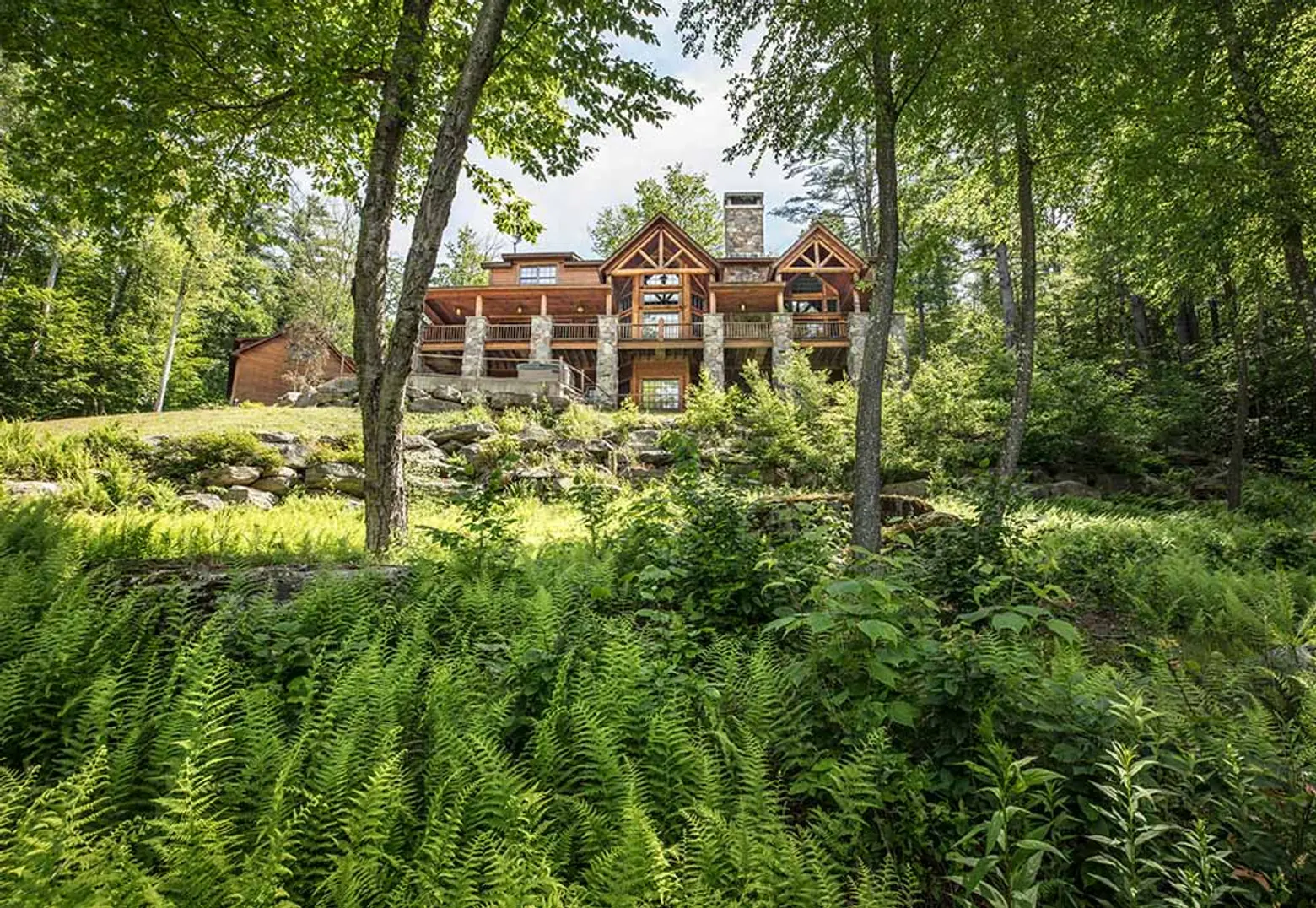
Dubrovsky bought the environmentally-protected land in Sullivan County in 1999, and the Chapin Estate opened in 2001. Dubrovsky works one-on-one with each homeowner to design their personal home, whether they want a cabin in the woods feel or something more modern. In all cases, each site used much of the natural resources removed for building, like trees repurposed for column supports or stones for mantle decoration. Some homes even have trees growing through the center of them! A dedicated woodworker carved fallen branches into statues of everything from dancing bears to beavers, and the tile backsplashes come via local Catskills artisans.
The Chapin Estate is in discussions with a Michelin-starred French chef to lead its farm-to-table culinary program, complete with meats, poultry, and produce (including wine) raised by local and regional farmers and breeders. They also hope to add an Ayurveda wellness spa, including dietician and nutritionist experts, as well as a heated swimming pool, steam room, sauna, and Jacuzzi.
Hear more from Steve himself here…
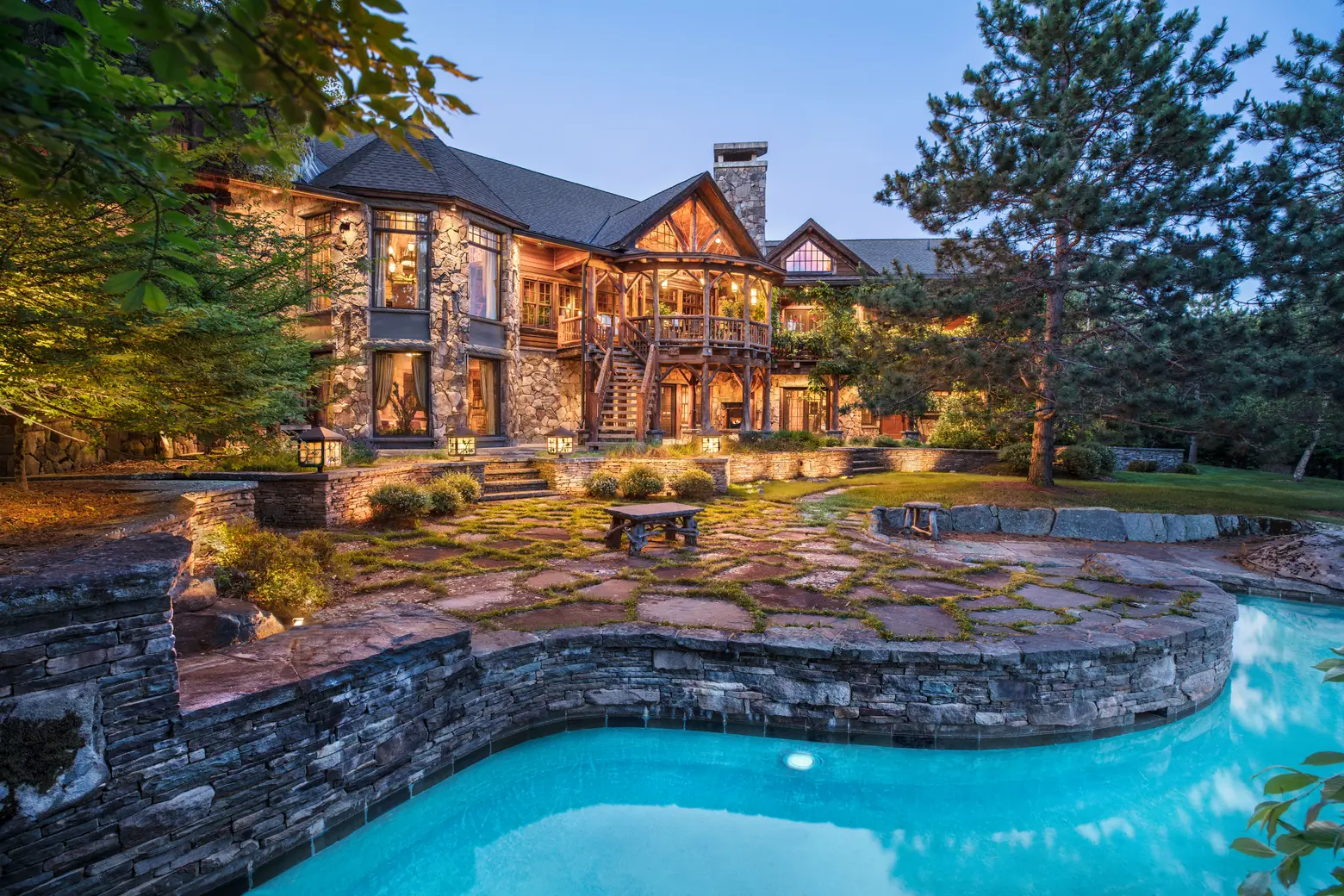
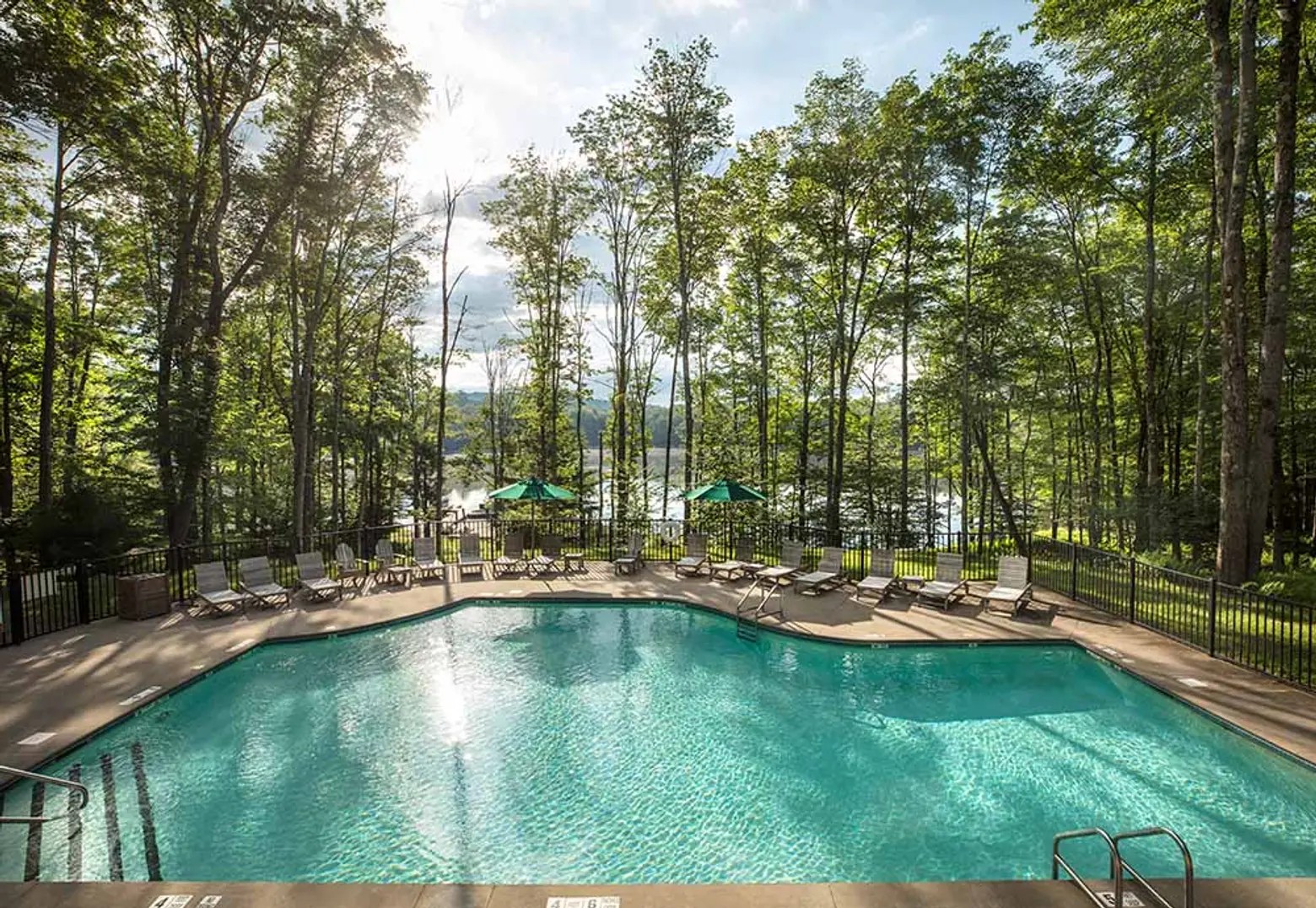
How does being a rodeo champion compare to being a real estate developer?
It is two different worlds but both are passions of mine and, at times, they blend. For example, when I was in my early 20s, on the road traveling to a lot of rodeos out west, I would always spend time in between performances looking at old lodges of the west, sketching details and taking pictures. I was very inspired by the old work that was done in the Northwest, as well as upstate and the Adirondacks. Both areas have always intrigued me. So, design and rodeos converged when I had downtime at the rodeos.
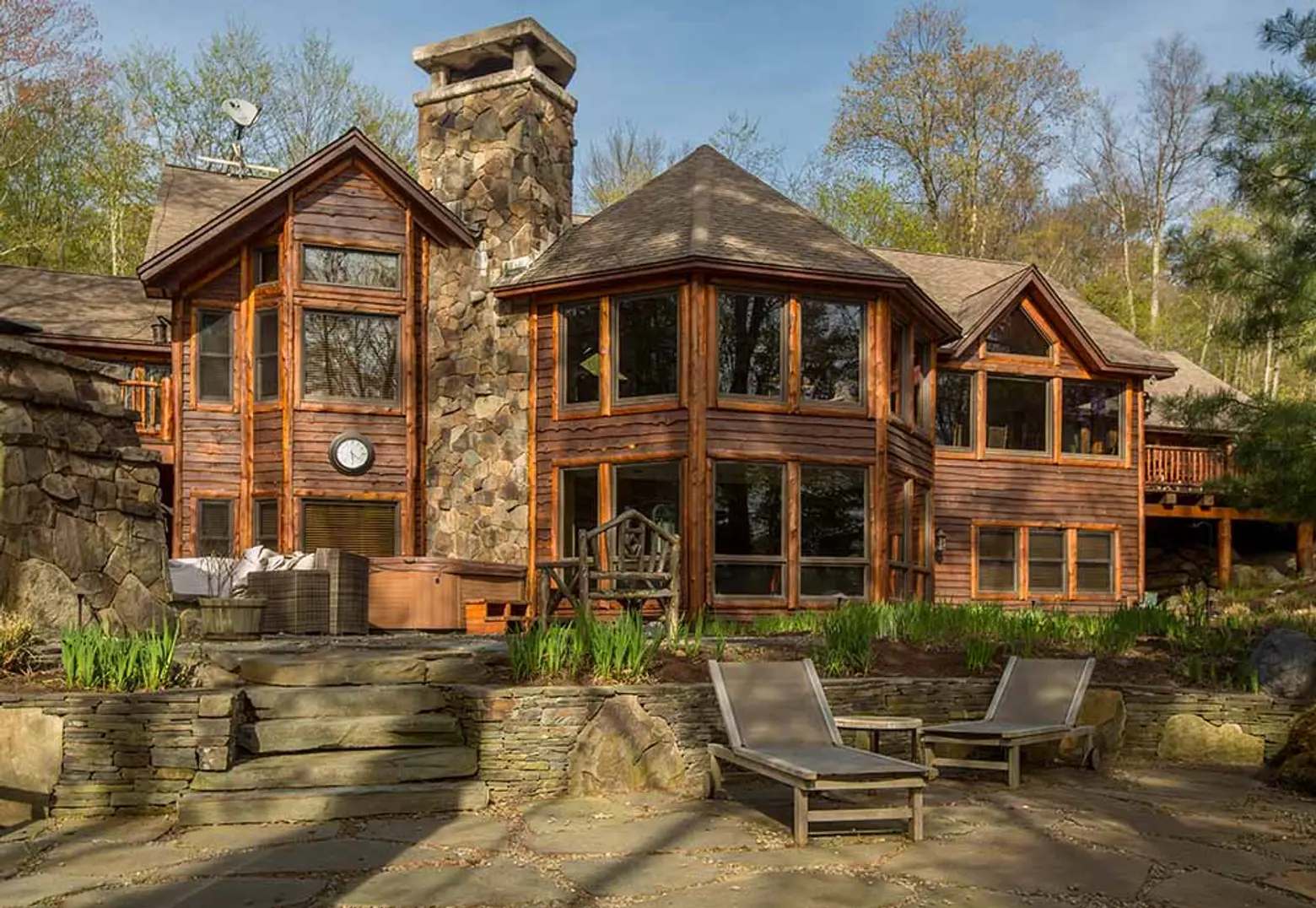
What is your design background?
My design background is kind of weird. It started when I was out of high school and worked in construction. When I got out of high school, I did small construction jobs–a deck or little addition, just simple things. One day, I was doing a job for a gentleman in New Jersey who was building a home designed by an architect. There was an entrance the owner loved that the architect didn’t want to do. I went home and I drew what I thought was the compromise to the problem. The architect hated it, the owner loved it. He fired the architect and hired me to build the house. A friend of the owner did a magazine story on the house. The owner gave me all the credit, my phone started ringing, and I was in a profession I didn’t intend to be in.
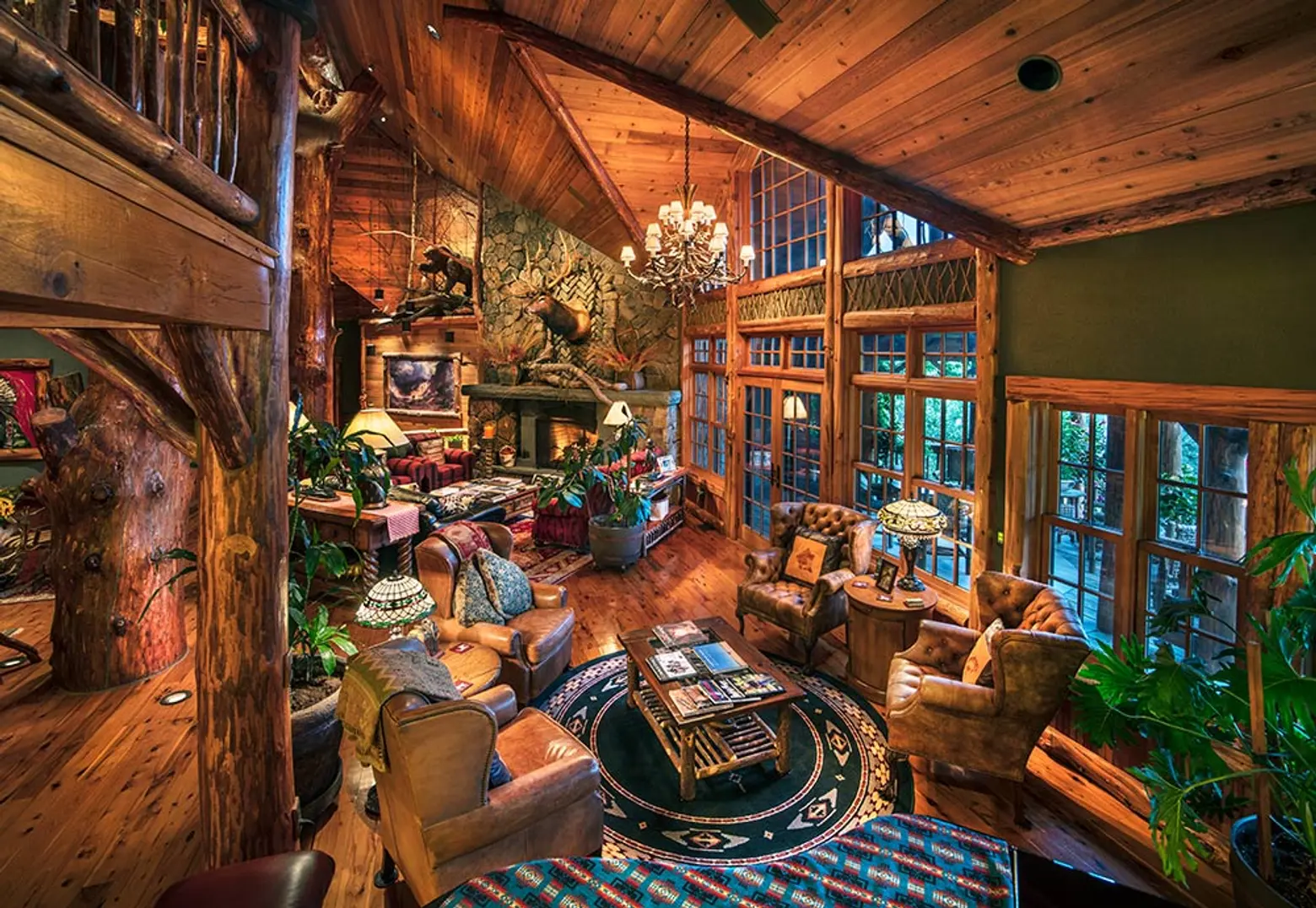
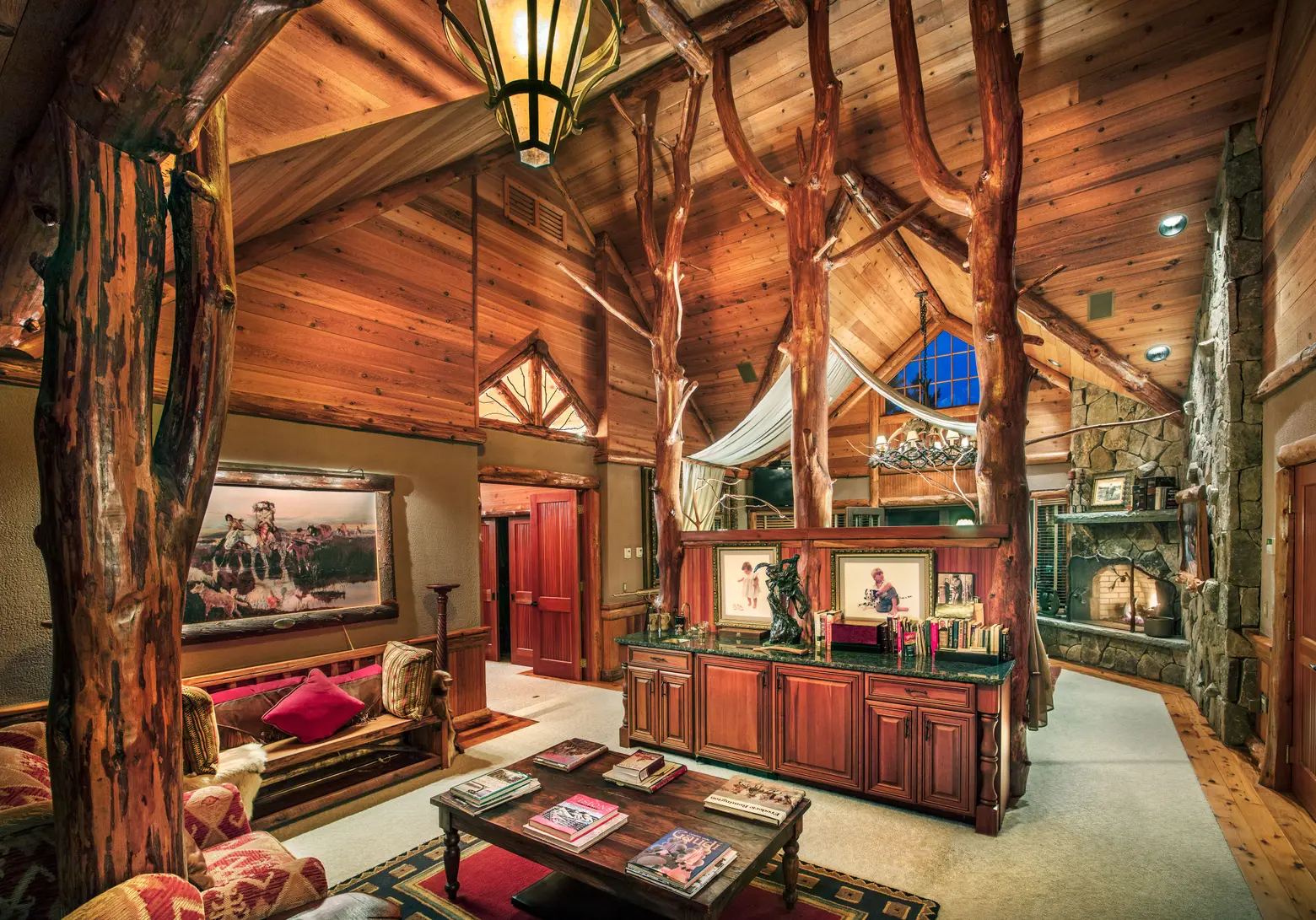
Did the environmentally-protected land status come with building restrictions?
The land I bought was part of the Chapin Estate that was built in the late 1800s. The power company bought and owned the land. There were no environmental restrictions on the land, but the only restriction was that no one could use the land but the power company. With deregulation, the power company joined together with ConEd and the land became available. I was able to make a deal with them to buy that original 6,000 acres. So there were no environmental restrictions when I bought the land, the restrictions were what I put on it.
We did not want a grid of however many lakefront lots we could get, although that’s where the money was. We determined how to develop the land with enough of a buffer between the lots so people feel like they have their own estate. The first restriction we created was that no home could be built on less than five acres. We restricted the way you have views to the lake, so trees cut had to be smaller than six inches, and the viewshed didn’t allow other people to look into the house to create the privacy we thought owners should have. When we were done, we had a bible full of restrictions. If you were coming to buy at Chapin Estates, you might think, “boy this is pretty restrictive,” but if you lived here, you’d think, “it’s not restrictive enough.”
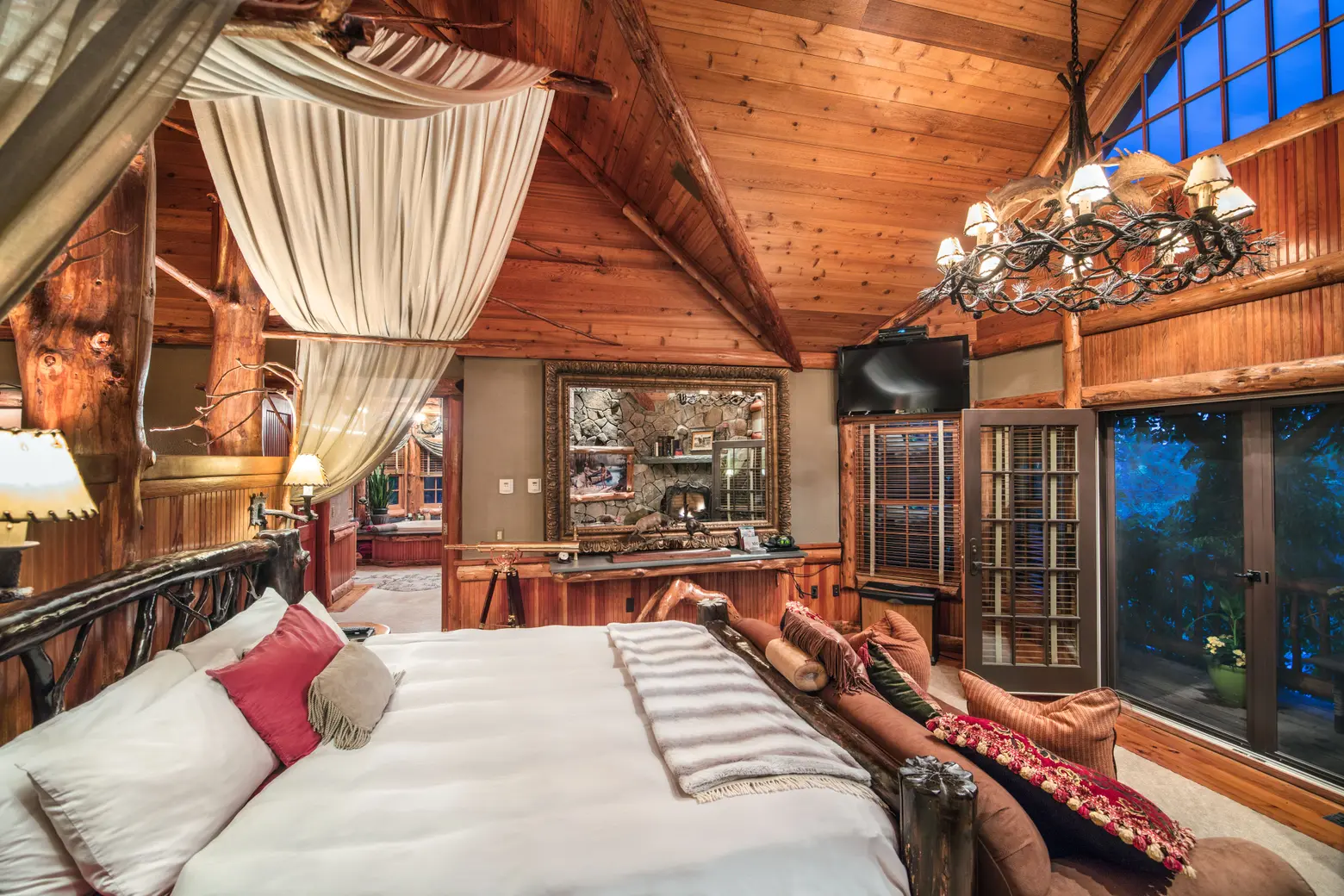
Did you use local building resources and materials?
Not only did we stick to local, but when we could, we took resources from the homesite. Most of the time, the trees inside are exactly from the lot they came from. People like to tell their friends about that.
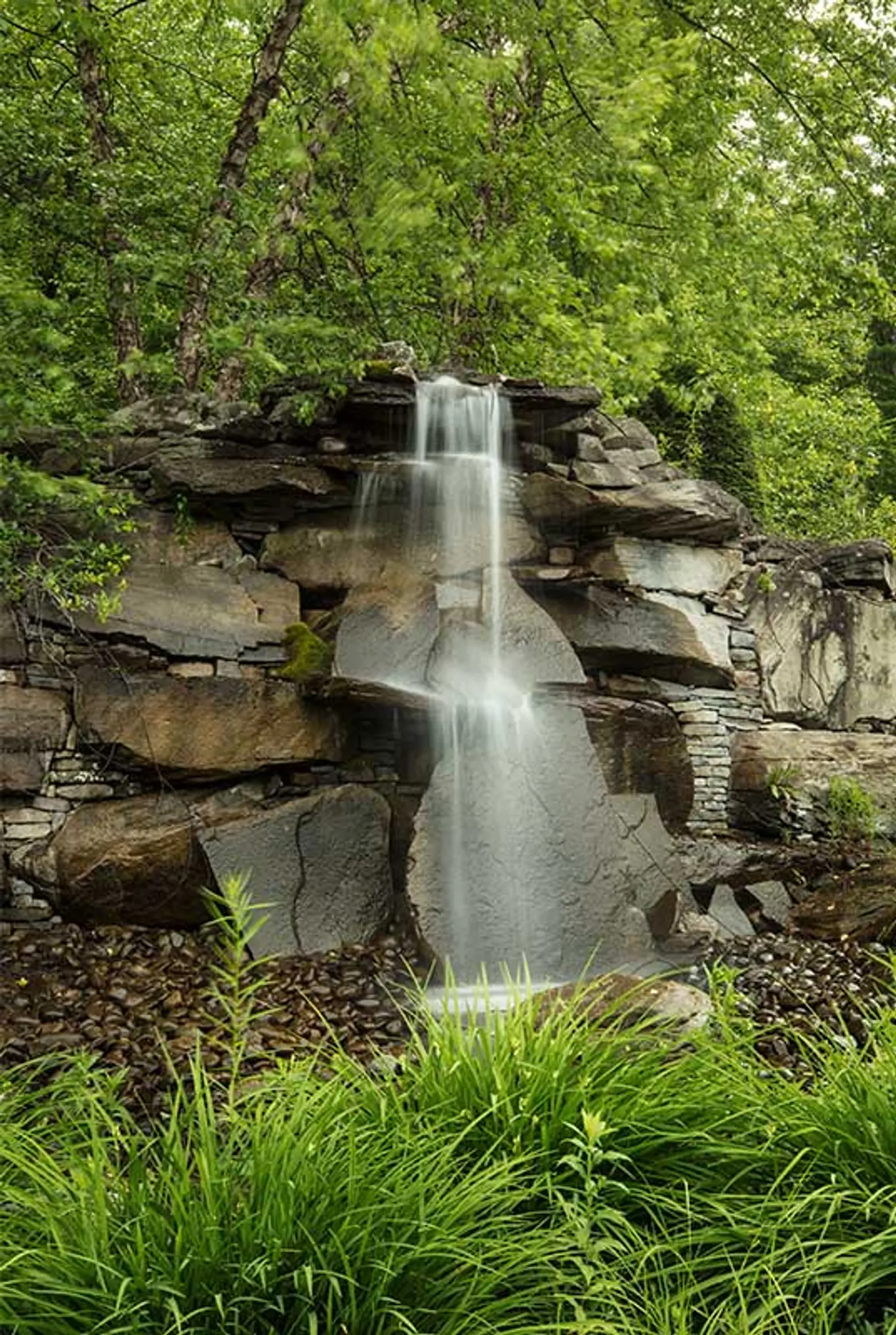
Tell me more about why you chose to not amenitize nature.
People who come here generally have a respect for nature. This project is like stepping back in time. This land had been left alone since the 1800s, so we elected to keep the homes on the property as light as possible and not to impact too much. Sometimes we take large rocks, the size of pickup trucks, and move them around so they fit in a little neater where someone wants a pathway or driveway. But, in almost every case, we try really hard to take what attracted somebody to a specific lot and make sure it stays one way or another. If that involves twig-work inside someone’s home and make checks on a ceiling, we’ll do that. We’ll use the native stone on the site for fireplace mantles or we have artists that carve the trees and stones. We’re pretty light on the ground and we try to use the natural settings from each lot into the home and into the decks, gazebos, and outside buildings.
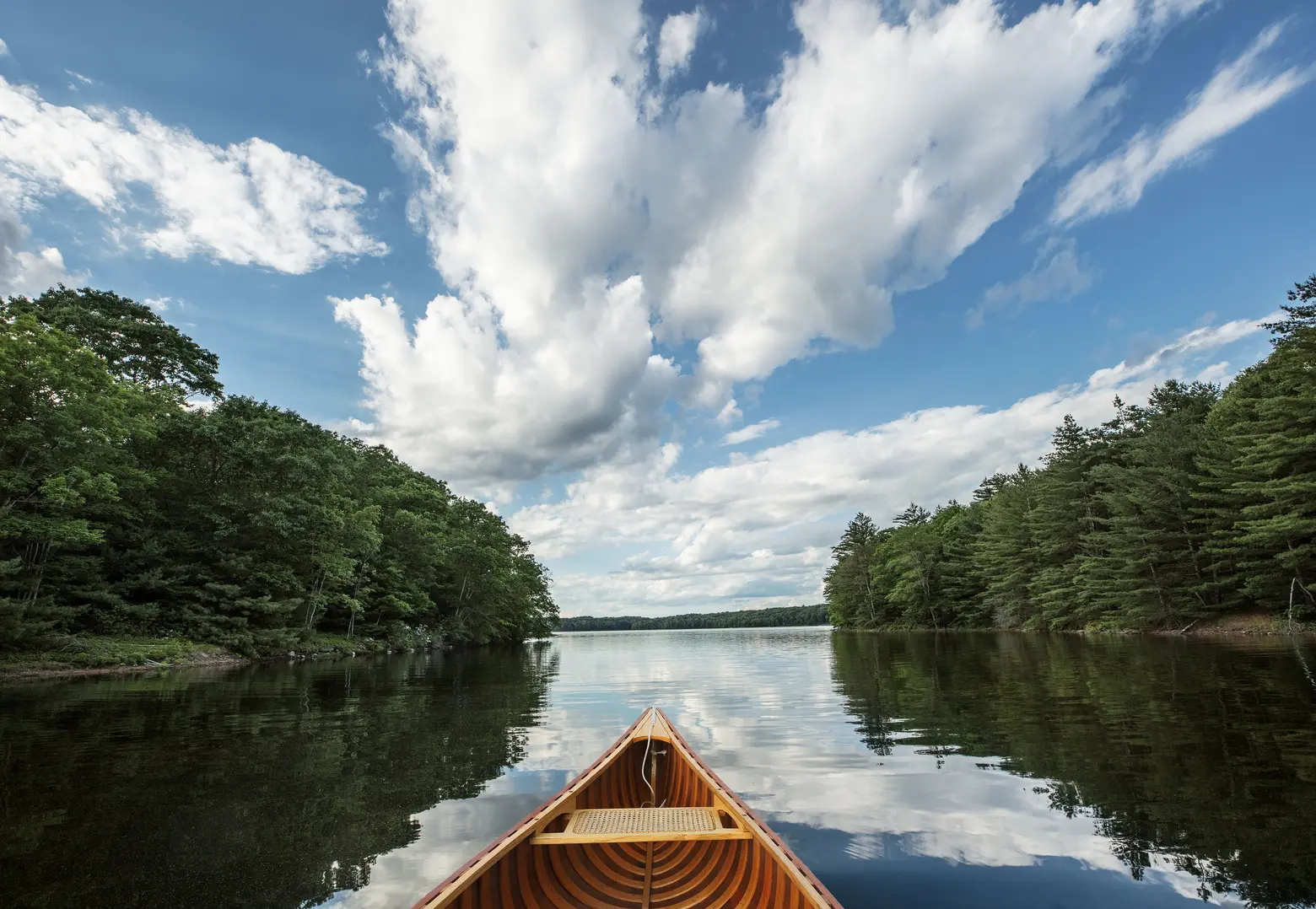
What is your typical demographic?
I’d say one third is from NYC/Long Island, a third from northern New Jersey and Connecticut, and a third from all over the country. We have people from Ohio, California, and Florida. The owners have very different backgrounds, some are very high profile and some are very low key but they are all looking for a quiet, well-maintained place to have a second home. The average age is probably low 40s.
This interview has been edited and condensed for clarity.
RELATED:
- Last available home in upstate ‘eco community’ Hudson Woods asks $1.18M
- Fall getaway: Travel to the historic Inns of Aurora for an anti-Manhattan antidote
- The best stylish suburban staycations outside NYC
All photos courtesy of The Chapin Estate















